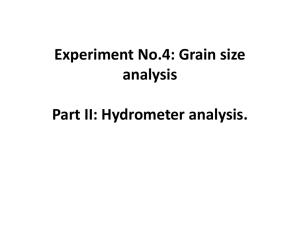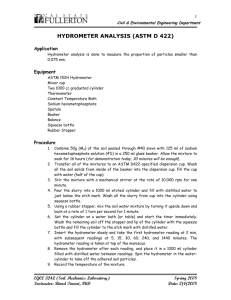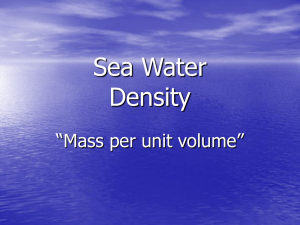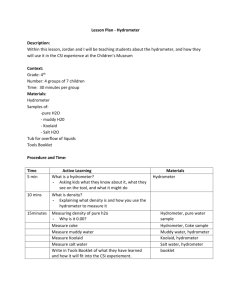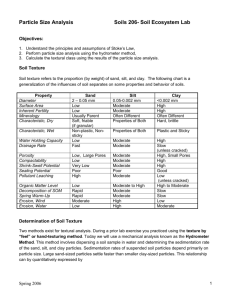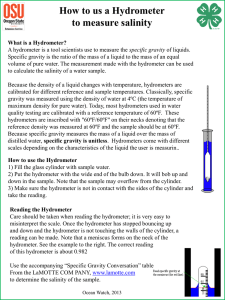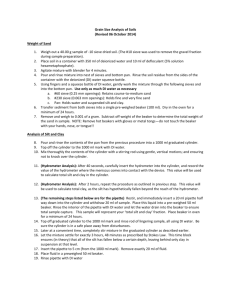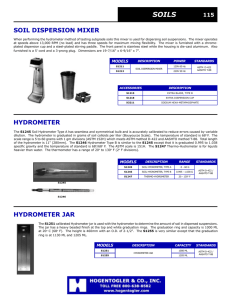Hydrometer Lab
advertisement
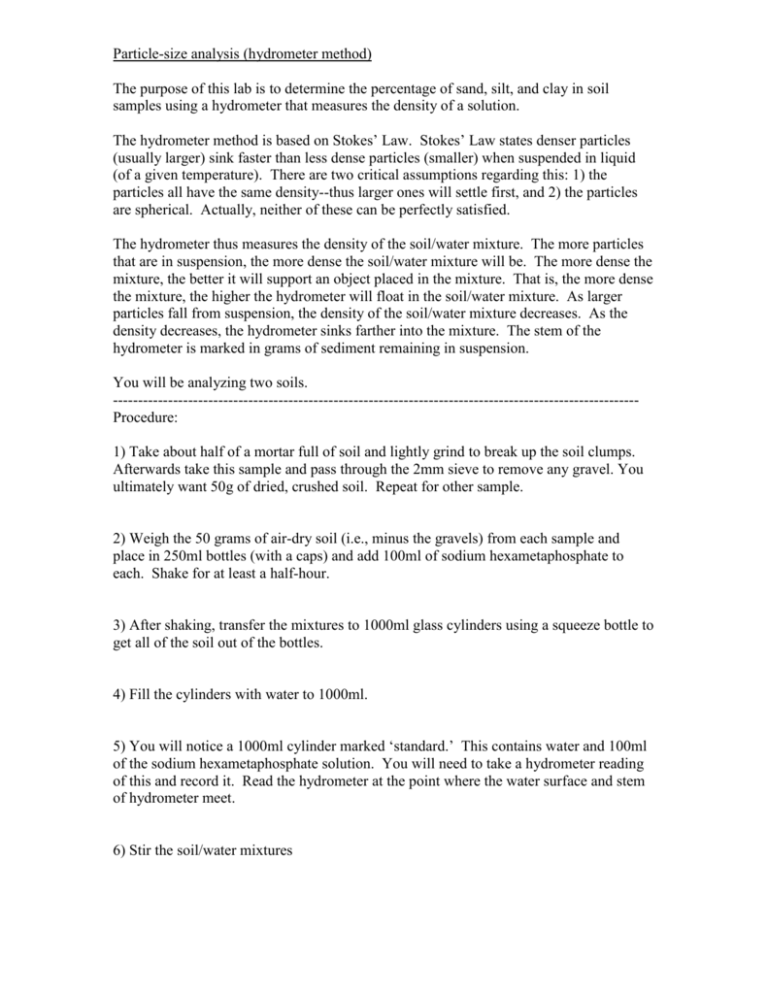
Particle-size analysis (hydrometer method) The purpose of this lab is to determine the percentage of sand, silt, and clay in soil samples using a hydrometer that measures the density of a solution. The hydrometer method is based on Stokes’ Law. Stokes’ Law states denser particles (usually larger) sink faster than less dense particles (smaller) when suspended in liquid (of a given temperature). There are two critical assumptions regarding this: 1) the particles all have the same density--thus larger ones will settle first, and 2) the particles are spherical. Actually, neither of these can be perfectly satisfied. The hydrometer thus measures the density of the soil/water mixture. The more particles that are in suspension, the more dense the soil/water mixture will be. The more dense the mixture, the better it will support an object placed in the mixture. That is, the more dense the mixture, the higher the hydrometer will float in the soil/water mixture. As larger particles fall from suspension, the density of the soil/water mixture decreases. As the density decreases, the hydrometer sinks farther into the mixture. The stem of the hydrometer is marked in grams of sediment remaining in suspension. You will be analyzing two soils. --------------------------------------------------------------------------------------------------------Procedure: 1) Take about half of a mortar full of soil and lightly grind to break up the soil clumps. Afterwards take this sample and pass through the 2mm sieve to remove any gravel. You ultimately want 50g of dried, crushed soil. Repeat for other sample. 2) Weigh the 50 grams of air-dry soil (i.e., minus the gravels) from each sample and place in 250ml bottles (with a caps) and add 100ml of sodium hexametaphosphate to each. Shake for at least a half-hour. 3) After shaking, transfer the mixtures to 1000ml glass cylinders using a squeeze bottle to get all of the soil out of the bottles. 4) Fill the cylinders with water to 1000ml. 5) You will notice a 1000ml cylinder marked ‘standard.’ This contains water and 100ml of the sodium hexametaphosphate solution. You will need to take a hydrometer reading of this and record it. Read the hydrometer at the point where the water surface and stem of hydrometer meet. 6) Stir the soil/water mixtures 7) When you finish mixing, you will need to begin timing, because you take hydrometer readings according to the schedule below. The readings you take will give the density in g/L. We will assume a constant temperature--it remains about 20o C in the lab. Remember do not stir, bump, or alter the solution once you finish stirring it and begin taking readings. Readings: A) at 40 seconds ____________ B) at 4 minutes _____________ C) at 37 minutes _____________ D) at 2 hours ________________ Calculation: [be sure to subtract the reading of the standard from each of these. Example: If the standard reading was 2 and reading A was 20, the calculation would be (50 – 18) x 2 Total sand = (50 – A) x 2 1) Sand _____% Coarse silt = (A – B) x 2 Coarse Silt _____% Medium silt = (B – C) x 2 Medium Silt _____% 2) Total Silt ___% Fine silt = (C – D) x 2 Fine Silt _____% Clay = D x 2 3) Clay _____% 8) Plot these percentages (1, 2, 3) on your textural triangle. What textural class is each of these soils? 9) What horizons did each of these soils originate from? 10) What are some possible error sources in determining texture in these analyses?
